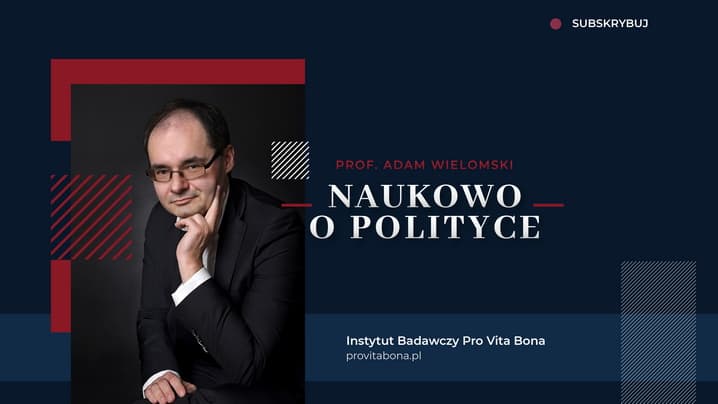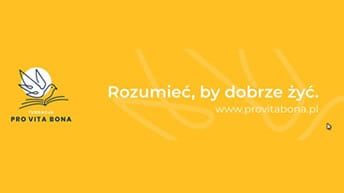In 2003, I first became aware of the annual rankings of Polish universities and colleges put out jointly by the mass-circulation newspaper Rzeczpospolita and the student/education magazine, Perspektywy ( perspektywy.pl ). Of course, there are a number of college rankings in Poland put out by different publications and institutions, but this one seemed to be among the most rigorous and comprehensive.
It should be noted, that in a 2013 survey, Perspektywy was chosen as “the most opinion-forming monthly publication” in Poland. It was also identified as such in a 2015 survey.
I had perused the Perspektywy website frequently during the summer of 2003 from Canada, as well as later in the fall of 2003, when I visited Poland. I was accessing the Internet through the Polish Post Office Internet café in Ciechocinek, the resort-town in which I was staying. Ciechocinek lies about 200 kilometers north-west of Warsaw. It is a resort town of about 14,000 permanent residents, known for its unique titration towers, which filter water from salt-water springs through layers of bramble, creating a micro-climate resembling that of sea-air. The Post Office had a glassed-in addition on the side where the computers were sitting. I suspect the Internet access in the Post Office was an attempt to fulfill the promise that had been made by the government at the time, to give every Polish person, access to the Internet.
Returning to Poland in the summer of 2004, I noticed that the 2003 rankings had remained up on the website for an inordinately long time.
In 2005, I had an acquaintance send me a print copy of the annual rankings issue. I have continued to receive the annual rankings issue until 2015 (except for 2008, when there was some kind of mix-up on the part of my various acquaintances in Poland). In contrast to the situation in 2004, most of the rankings information was available on the website shortly after the appearance of the print issue.
In 2010, I also branched out to requesting three other publications of Perspektywy Press: one on M.A.-level studies; one on doctoral, MBA, and “post-degree” studies; and one on “first-degree” studies. The latter publication claimed to list every institution of post-secondary learning in Poland.
In 2011, I had publications on M.A. and doctoral-level studies; on MBA and “post-degree” studies; and on “first-degree” studies, delivered to me. Apart from the 2011 annual rankings issue, I also obtained the June-August 2011 issue of Perspektywy – which included a Report on Non-public Colleges, on the 20th Anniversary of the establishment of the first fully non-public college in Poland — as well as a ranking of MBA programs in Poland.
In 2012, I received the annual rankings issue (May 2012); a publication on “first-degree” studies; as well as a publication on MBA and “post-degree” studies – which also included a ranking of MBA programs in Poland.
In 2013, I had only received the annual rankings issue (May 2013).
In 2014, I had received only the annual rankings issue (May 2014). As of 2014, the association with Rzeczpospolita appeared to have been dropped, in favour of a partnership with Dziennik Gazeta Prawna (Law Gazette Daily).
In 2015, I received only the annual rankings issue (May-June 2015).
What were the main impressions that I had from all this material? I must say that I had a largely positive feeling, looking at these very professionally produced publications, which showed a colorful, vibrant Polish educational sector that had gone light-years beyond the achievements of the earlier People’s Republic. Nevertheless, I also saw plenty of evidence of “political correctness” seeping in at many points into this Polish educational sector. The emphases on “internationalization” of universities and colleges, of conforming to E.U. regulations, of the aggressive promotion of multiculturalism, and so forth, were easy to discern.
I personally remember some very pleasant college-level studies on Polish Ethnography that I had attended in the summer of 1975 in Poland, in Kielce (in south-central Poland). Since I was highly fluent in Polish and quite bright for my age, I was able to meaningfully take part in the activities though being only in my mid-teens at the time. These types of initiatives were part of Edward Gierek’s huge outreach to Polonia — that is, communities of persons of Polish descent living abroad. There was an especially intensive effort towards American and Canadian Polonia. This coincided with a brief “ethnic studies” movement in America and Canada at the time – when, for the first and probably last time, so-called “white ethnics” like Polish-Americans were somewhat popular. One remembers that 1970s television series, Banacek, with a suave Polish detective – although it was marred by little research into actual Polish matters. (The name Banacek, for example, is typically Czech, not Polish.) There was also the iconic figure of Bobby Vinton, one of whose hit songs included major passages in Polish. The American television mini-series Roots was also referred to as representing a search for rootedness which Polish-Americans should also undertake, in respect of their Polish origins. Although there was obviously a “hidden agenda” behind the Gierek outreach, it was something that (as far as I can see) has actually never been matched – I refer of course as far as its positive aspects — in the post-1989 period. I also note the major emphasis that was put on folk- and peasant-culture and native Slavic elements in Poland at that time – for example in widely-circulated art.
It should be noted that I never visited Poland in the 1980s, especially after the declaration of martial law by Communist General Jaruzelski on December 13, 1981. I felt a distaste to go there during those years. Finally, the Eastern European revolutions of 1989 resulted in the collapse of the Eastern Bloc. I thought of visiting Poland again. However, I was discouraged by the dissolution of the patriotic Olszewski government in 1992. Around this time, I had also written a long cri-de-coeur letter to the new Polonia coordinating body, Wspolnota Polska (Polish Commonweal). Not receiving an answer, I mailed a copy of the same letter some months later. The fact that I never received even the most cursory reply discouraged me further.
Because of various difficulties in the 1990s, I only managed to get out to Poland in the spring of 2002, twenty-five years since my last prior visit of 1977. I went with great expectations in regard to some personal matters. I returned in the fall of 2002, the fall of 2003, and the summer of 2004. These were probably the three happiest years of my adult life. The beauty of the Polish landscape and architecture, and, especially, the wonderful ambience of the countryside and smaller towns, was clearly a significant element of these moments of joy. However, things didn’t work out as I had hoped, and I subsequently suffered great disappointment.
I managed to go again in the summer of 2008, but it was a bittersweet trip.
Today, I can unfortunately see how the country is in the throes of massive change. Indeed, one can see today that young people in Poland are being enchanted and entranced into new types of lifestyles – so-called “international” or “North American” modes of life — where genuine patriotism and religious faith are playing less and less of a role.
Nevertheless, there is a definite presence in at least some of the higher-education sector of patriotic and religious themes and elements. One thinks of such institutions as the John Paul II Catholic University of Lublin ( kul.pl ) – which had once been the only independent university between the Elbe and the Pacific. (The university, which had been founded in 1918, has a hybrid public/private legal status.) Two prominent Catholic universities are the Cardinal Stefan Wyszynski University in Warsaw (uksw.edu.pl), and the Pontifical University of John Paul II in Krakow ( upjp2.edu.pl). I would also like to bring the readers’ attention to the Akademia Polonijna (Polonia University) in Czestochowa (ap.edu.pl ) – which has taken on a special mission to maintain contacts with the various Polish communities abroad. The very conservative Father Rydzyk (the founder of Radio Maryja and TV Trwam) has established a college in Torun (wsksim.edu.pl) which has ranked in the top thirty of non-public institutions which offer a master’s degree.
As far as the rankings themselves, it’s not surprising that the Jagiellonian University in Krakow, and the University of Warsaw, have always been ranked first or second. (In 2012 and 2013, the Jagiellonian University was first. In 2014, it was the University of Warsaw. In 2015, both the Jagiellonian University and the University of Warsaw received the maximum possible scores, so they were effectively tied in first place.) Perennially in a strong third place is the Adam Mickiewicz University in Poznan.
In the interwar period, the university in Poznan, and the city and countryside around it, were bastions of the right-wing Polish National Democracy movement. Today, however, AMU seems to be one of the most “politically correct” universities in Poland, with a special focus on “internationalization”.
The Second World War and its aftermath caused enormous, virtually incalculable losses in the Polish academy. Huge numbers of Polish intelligentsia were massacred by both Nazi Germany and the Soviet Union. For example, in late 1939, the professors and research workers of the Jagiellonian University were treacherously invited to a meeting by the German occupation authorities, where they were brutally set upon and sent to the concentration camps. Many of them died of ill treatment. Many of the Polish reserve officers who died at Katyn were prominent professors and scientists. With the loss of Wilno and Lwow, the two, centuries-old Polish universities in those cities ceased to exist, although some of the scholars tried to resume work at Torun and Wroclaw, respectively (in the new People’s Republic). The Stalinist period, which lasted until 1956, was mostly an era of darkness. It was only when Wladyslaw Gomulka came to power in 1956, and initiated the period of “the Thaw” – that the regime was essentially “polonized”.
Nevertheless, the general level of most people’s education in the People’s Republic doubtless improved, although it was also mixed in with propaganda. Illiteracy virtually disappeared. The birthrates in Poland until the 1980s were also actually considerably higher than they are today, when they have fallen drastically.
Even these annual ranking issues have mentioned the fact that a “demographic low” is overwhelming Poland – which is clearly expected to have an impact on college attendance numbers. The only “solution” that is being suggested is “internationalization” of the student body. What is interesting, however, is that after all these strenuous efforts, most of the foreign students are from Ukraine, Belarus, and other Slavic and Eastern European countries – some of whom may in fact be of Polish origins.
The main ranking is “the ranking of academic institutions” (88 in 2012; 83 in 2013). Another ranking is of non-public institutions that offer master’s degrees (93 in 2012; 84 in 2013). A third ranking is of non-public trade-school institutions (that usually offer licentiates — which are roughly the equivalent of an Anglo-American B.A.) as well as state trade-schools of higher learning (75 in 2012). This was divided into two categories in 2013 – state trade-schools of higher learning (29); and non-public licentiate schools (29). The drop in the number of institutions may have occurred because colleges that didn’t fill out the survey forms requested are automatically dropped from the rankings.
In 2014, all non-public licentiate institutions were dropped from the rankings. Thus, 88 “academic institutions”, 80 “non-public institutions that offer master’s degrees”, and 27state trade-schools of higher learning, were included in the issue.
In 2015, 87 “academic institutions”, 70 “non-public institutions that offer master’s degrees”, and 30 state trade-schools of higher learning, were included in the issue.
Despite the large number of colleges included in the rankings (especially prior to 2014), it’s clear to me (from the separate publications on “first degree” studies) that a considerable number of colleges have been left off the ranking lists, which, of course, is just as it should be.
For a more reflective person, perusing the annual ranking issues, as well as the other publications mentioned above, can provide many hours of intellectual enjoyment. It is a bit amusing to see those colleges located in various smaller towns, to remind oneself where the small town lies in Poland, and to try to envision how the college fits into the small town. Also, with the ubiquity of the Internet, one can check out the websites which virtually every college now has, if one is curious about one or another of them – and possibly see the actual physical buildings through an Internet tool like Google Earth.
I personally remember how difficult it was to obtain information even about major universities like the Jagiellonian in the early 1990s. Now, the information is readily available on the Internet, and one doesn’t have to rely so much on one’s relatives or acquaintances to keep current.
It is of some interest to me whether there might be appearing, in the future, assessments of Polish universities and colleges in a style similar to those put out by the Intercollegiate Studies Institute
( isi.org) in the United States (about American – and a few Canadian — colleges). The moderately traditionalist ISI publishes a Guide to Universities and Colleges which emphasizes the colleges which uphold humane learning and resist the excesses of “political correctness”. The time may be coming in Poland where such a Guide to Polish universities and colleges might in fact be helpful to some students. Perhaps some more patriotic-minded think-tank in Poland could take up the task.
It may be seen as somewhat ironic, that after the waves of Communist attempts to undermine free academic inquiry in Poland, there appear to be taking place now, new waves of attempts to set the higher-education system in certain “politically correct” directions. Nevertheless, I still feel the academic situation in regard to the imposition of “p-c” is considerably better in Poland, than, for example, in Canada.
Mark Wegierski


